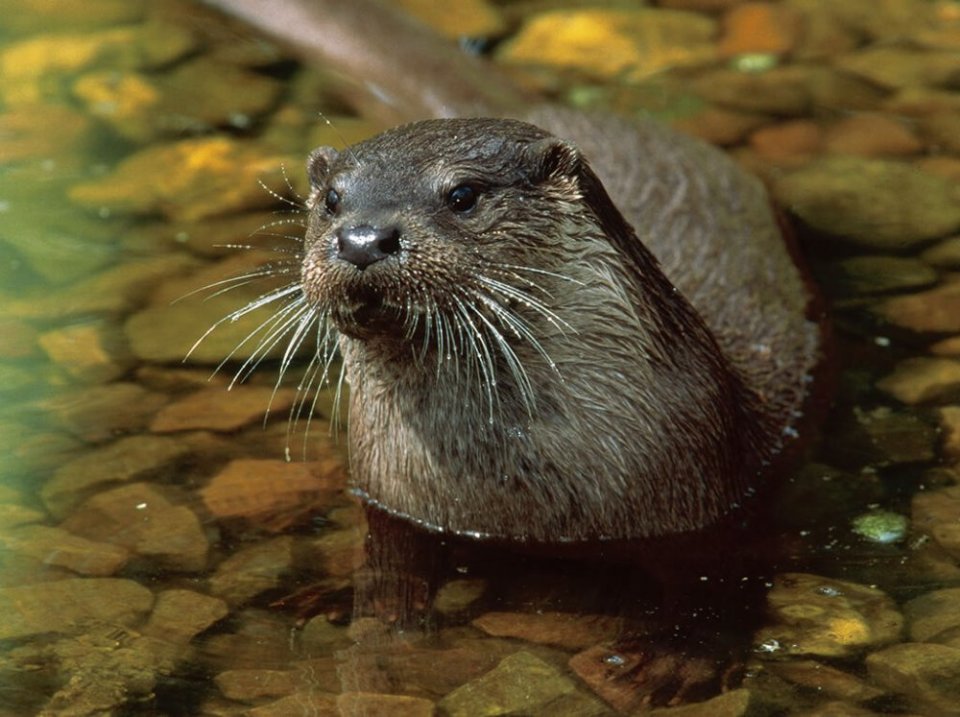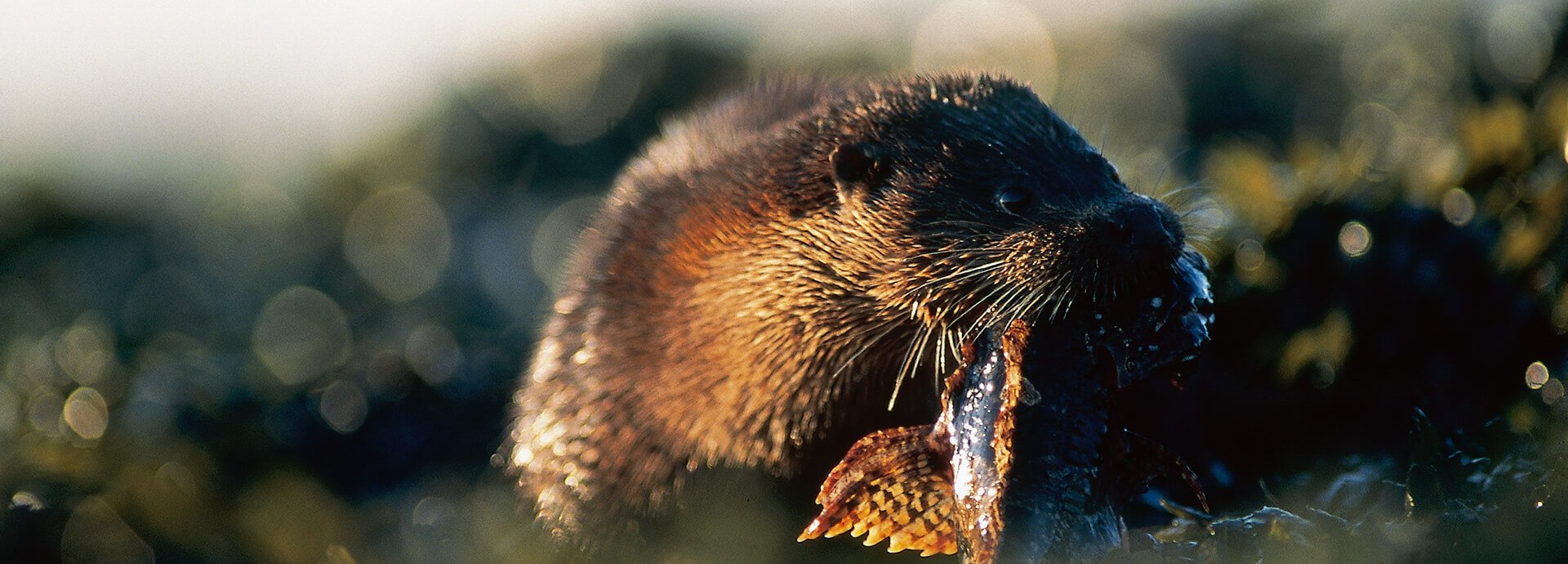Otter – Lutra lutra
The number of otters within the SAC is not known, but there is evidence that shows that otters use areas of the coast throughout the whole site. Information from surveys shows there is otter activity around the estuaries of the SAC with indications of regular otter usage of the Glaslyn/Dwyryd and Dyfi estuaries, as well as signs of otters (e.g. spraints) by the Mawddach estuary and in mine adits along the estuary. Information from surveys, sightings, and road casualties suggest that the Soch, Rhydhir, Erch, Dwyfor, Artro and Dysynni rivers are all now used by otters. There is also evidence of otter use of tidal reaches, for example, otter signs are found regularly at Broadwater on the Dysynni River. Whilst it may be considered that they are more commonly found in and around the estuaries, a study of the Llyn Peninsula in 2002 found otter signs within 1km of the shore at 8 out of 10 sites surveyed.
The SAC contains important potential feeding areas for otters. Coastal otters can hunt as far as 100m offshore in water over 10m deep, but most feeding is done much closer to shore in water less than 3m deep. The main hunting areas will be largely determined by the habitat preferences of the prey species. Studies in Scotland on the type of prey taken have shown that fish formed a large proportion of the diet with various species being eaten (such as eelpout, rockling, sea scorpion, butterfish, corkwing wrasse, eel and fifteen-spined stickleback) and crabs and sea urchins are also eaten but in lesser quantities. Otters are likely to be able to take advantage of seasonally abundant rood sources. It is also likely that otters are not wholly dependent on the coast for food and that they also feed in adjacent rivers.
Over most of their range, otters are nocturnal or diurnal, probably due mainly to disturbance and persecution. When otters are not active they may sleep in a variety of resting places known as a den, holt or couch. These can be holes in the ground, under tree roots, within rock piles, dense scrub or in quite open places. Otters are known to breed in certain areas within the SAC, but we currently do not know how many otters breed within the SAC or where they rest due to their secretive nature and current lack of survey work around the coast, but the SAC has lots of potential good habitats for otters to live and breed in. The coast around the SAC is well supplied within rivers and streams and it is highly likely that otters travel from one watercourse to another along the coast.
UK otters are still recovering from a sharp decline that was suffered during the 1960s and 1970s due to poisoning by organochlorine pesticides which was exacerbated by hunting and habitat loss. Otters are re-colonising marine sites at a slower rate than rivers. The regular presence of otters in the SAC makes this an important site for the conservation of this species.

